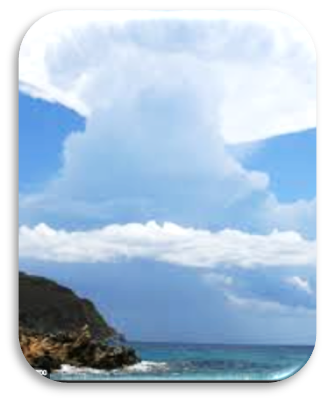Water is a vital component for the survival of all life forms. The human body consists of 60% or more water. Have you ever wondered about the source of fresh water? Where does this infinite source of water come from that has been quenching humanity’s thirst for millions of years?
However, it’s important to note that only 1% of the water on Earth is drinkable. Fortunately, nature has an amazing system that provides us with much-needed drinkable water every year. The sun evaporates water from the surface of the earth, and it rises into the atmosphere as water vapor, forming clouds. The wind carries these clouds to various places, and depending on the conditions, the water takes different forms such as snow, hail, or rain, and eventually lands on the earth’s surface. This water then travels through various mountains, rivers, and ravines, serving all living beings in different ways, whether it be a plant, animal, insect, bird, or any other living organism that requires water.
All the water that is used or unused either evaporates or flows into the ocean, and the cycle repeats. Some of the water gets retained in ponds and lakes, while some evaporate quickly after falling on the ground. Some water becomes ice and remains as a glacier for years, while the rest flows through the rivers and back into the ocean.
Throughout its lifecycle, water plays different roles. It is consumed by living beings such as mankind, animals, crops, plants, and trees, among others. Additionally, water helps in transporting waste materials and other systems to the ocean, where it continues to play an essential role in sustaining life on our planet.
Water possesses various properties and capabilities that vary depending on its form and location. For instance, water that drops on mountains and flows down hills contains both potential and kinetic energies, which allow it to perform different functions than water that drops in a pond. Similarly, water that drops as hail or snow plays different roles in the ecosystem. Each form of water has a unique role to play during its current lifecycle on the ground before eventually returning to the ocean or cloud.
During its lifecycle, there is no guarantee that the water that fell in a particular location will return in the same shape, size, color, or for the same role in the next cycle. In fact, water can cycle across different continents, and we cannot determine with certainty that the water flowing in the USA originates only from its own mountains and not a product of clouds that flew over from another country or continent.
Clouds, formed by the sun’s evaporation of water from different locations, can travel globally, carried by wind patterns such as hurricanes. While we can track the movement of sand from the Sahara Desert across continents, identifying the movement of water in its cloud form is challenging.
Just like water, living beings also come into existence and cycle back. Each time they return, they may appear in different forms, colors, countries, or environments. Despite the significant advances in science, we are yet to determine where life comes from and where it goes after its cycle, leaving behind the body.
Human beings are born, live their lives, and then die, with the whole system designed to operate cyclically. The definition of useful life is a matter of debate among human beings, with each group having its own philosophy and thoughts. This translates into different religions and practices across different cultures.
However, all religions are just a few thousand years old, a mere fraction of the billions of years of the planet’s existence. No religion can fully explain the complexity of existence, but they make attempts to explain it in the best way possible. Us mortals created religions, and from time to time we need to adjust our interpretation of existence with the advances in science.
Life has been cycling through for billions of years, with the wind moving clouds and water from one continent to another in the next cycle. However, we still do not know what moves the soul. It remains a mystery that science and religion have yet to unravel.
It is unwise for us to cling to any form of territorialism, whether it be based on race, religion, gender, property, or power. We cannot be certain that in the next cycle of our existence, we will be born in the same part of the world that we are currently exploiting or destroying. We must remember that the system we leave behind will treat us accordingly. It is possible that in our next cycle, we may be born in a country we are currently at odds with, or in a class of people we are currently oppressing.
Like water, our soul will be recycled and infused into a new body, a new being with a unique role and set of capabilities. Our cycle will continue, just as the water cycle continues.
It is not enough to leave a better world for our grandchildren, we must also leave a system that works for all, not just for one particular race, class, gender, or color. It is challenging, but we must refocus ourselves with a broader perspective, one that takes into account the possibilities beyond this life cycle. We must treat this planet as one that we will share with one another for many cycles to come.
